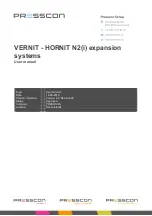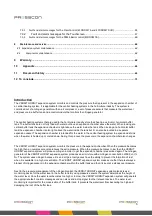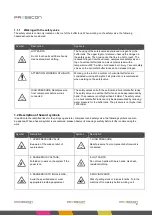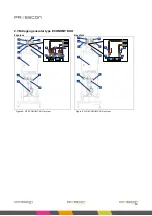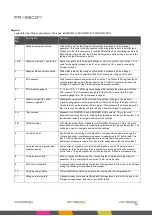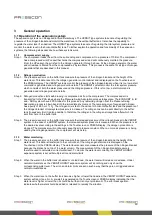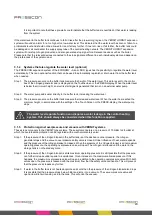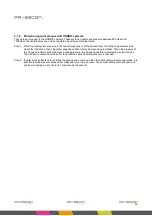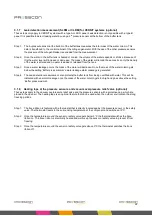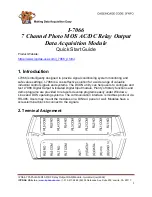
9
1.1.1 Working with the safety valve
The safety valve is commonly located on the roof of the buffer tank. When working on the safety valve, the following
hazards should be considered.
Symbol
Description
Applies to
HOT PARTS,
Do not touch parts with bare hands.
Use heat-resistant clothing.
The housing of the safety valve and relieved nitrogen from the
buffer tank. The upper layer of water can heat up the nitrogen in
the safety valve. The housing can then be too hot to touch. The
relieved nitrogen from the vacuum- overpressure safety valve on
top of a vertical buffer tank can also contain steam with a
temperature of 90°C which could cause burn injury. Vacuum safety
valves on the horizontal buffer tanks do not release nitrogen.
ATTENTION! WORKING AT HIGHTS,
Working on the roof of a vertical or horizontal buffer tank is
considered working at heights. Fall protection is recommended
when working on the safety valve.
HIGH PRESSURE, Relief pressure
from components before work is
conducted.
The safety valves on both the vertical and horizontal buffer tanks.
The safety valve on a vertical buffer tank can be depressurized by
hand. The pressure is not higher than 28 mBar. The safety valve
on a horizontal buffer tank can only be depressurized by relieving
water pressure for the buffer tank. The pressure is not higher than
1200 mBar.
1.2 Description of hazard symbols
In addition to the identified risks for the nitrogen generator, compressor and safety valve, the following symbols can also
be applied. When a hazard symbol is encountered, please observe its meaning carefully before further commencing the
work.
Symbol
Description
Symbol
Description
1. OVERPRESSURE VALVE,
Be aware of the sudden relief of
overpressure.
7. HIGH PRESSURE,
Relief pressure from components before work is
conducted.
2. DANGEROUS VOLTAGE,
Forbidden to work on the system if the
power is on.
8. HOT PARTS,
Do not touch parts with bare hands. Use heat-
resistant clothing.
3. DANGEROUS TO INHALE GAS,
Avoid the specified area or wear
appropriate breathing equipment.
9. MOVING PARTS,
Risk of getting stuck or injuries to limbs. Turn the
machine off completely before working on it.
Summary of Contents for HORNIT N2
Page 2: ...2...

